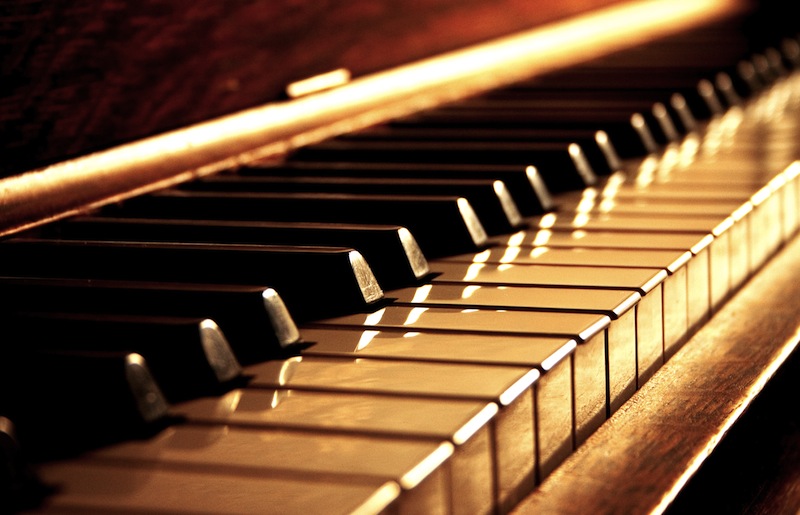< Back to Index
http://www.westernseminary.edu/transformedblog/wp-content/uploads/2012/04/piano-keys.jpg
Forces acting on the Piano
Force is typically given by the following equation:
F = ma
where F is the net force, m is the mass, and a is the acceleration
The majority of the forces on the piano are applied forces when someone presses a
key. This activates a mechanism in the piano known as the "Action".
The Action

http://www.allegropianoworks.com/assets/gra_action_dia.jpg
The main components of the Action of the piano is comprised of the wippen, the
repetition mechanism, the jack and let-off button, and the hammer. When someone
pushes a key, the force on the key is converted through the mechanism so that the
hammer can strike its matching string in the piano. Higher forces on the keys create
louder sounds while lower forces create quieter sounds. However, if the force is too
low, the hammer will not have enough force to create sound by striking the string,
so the piano will remain silent.
The Pedals http://www.scienceclarified.com/everyday/images/scet_02_img0190.jpg
There are three pedals on a typical piano and they are all activated by applying enough force on them. The left pedal is the soft pedal, because it converts the force applied on it to a stopping force, which causes the hammers to strike the strings with less force as well as shift the keyboard of the piano. The center pedal is used to disengage the dampers that are in the piano, causing the strings to vibrate longer, producing an echo-like sound. The right pedal is the damper pedal. Instead of disengaging the dampers, it puts more force on them, reducing the vibrations on the strings, creating very short sounds.
Tension Force
The tension force is the force exerted by each end of an elastic body such as a string or a cable. Depending on the tension force on the strings (as well as their width and length), different pitches are produced on the piano.
Total Force
The total force of the entire system being the piano, excluding the friction between the keys is:
FTotal = T - Fapplied
Fapplied = mfingerafinger
where T is the tension force, Fapplied is the applied force which is equal to the mass of the finger multiplied by the acceleration of the finger. Because the force on the piano keys relies on the acceleration and masses of the fingers, the total force is constantly changing since the masses are reliant on which finger is used and the acceleration is constantly changing depending on how soft or loud one wants the sound to be.
